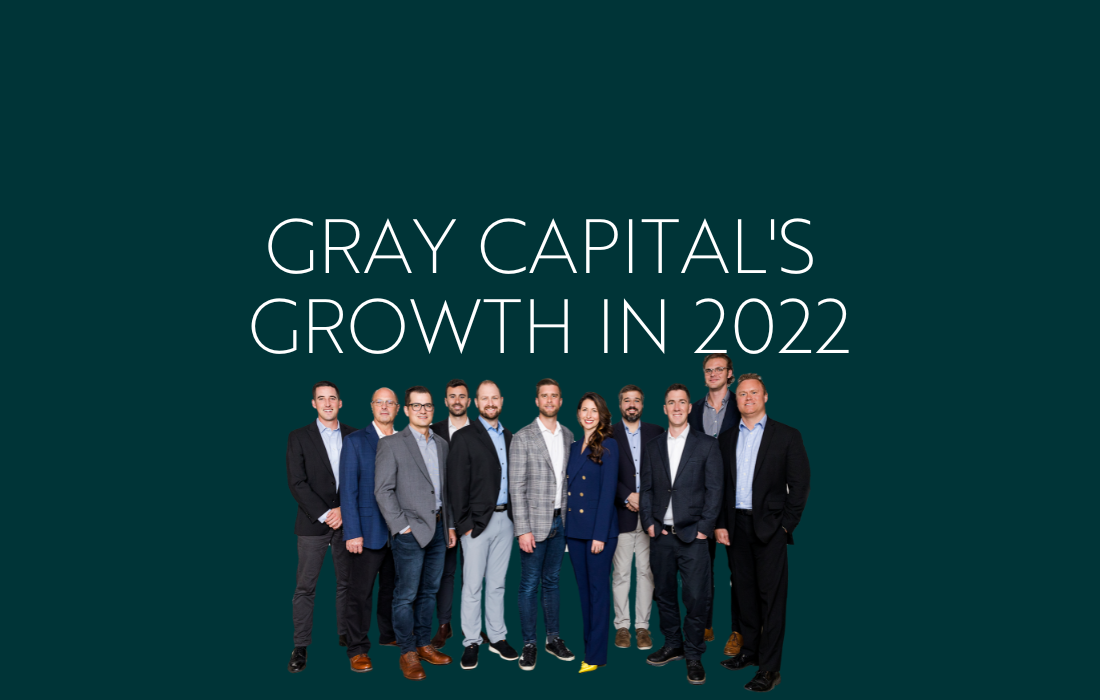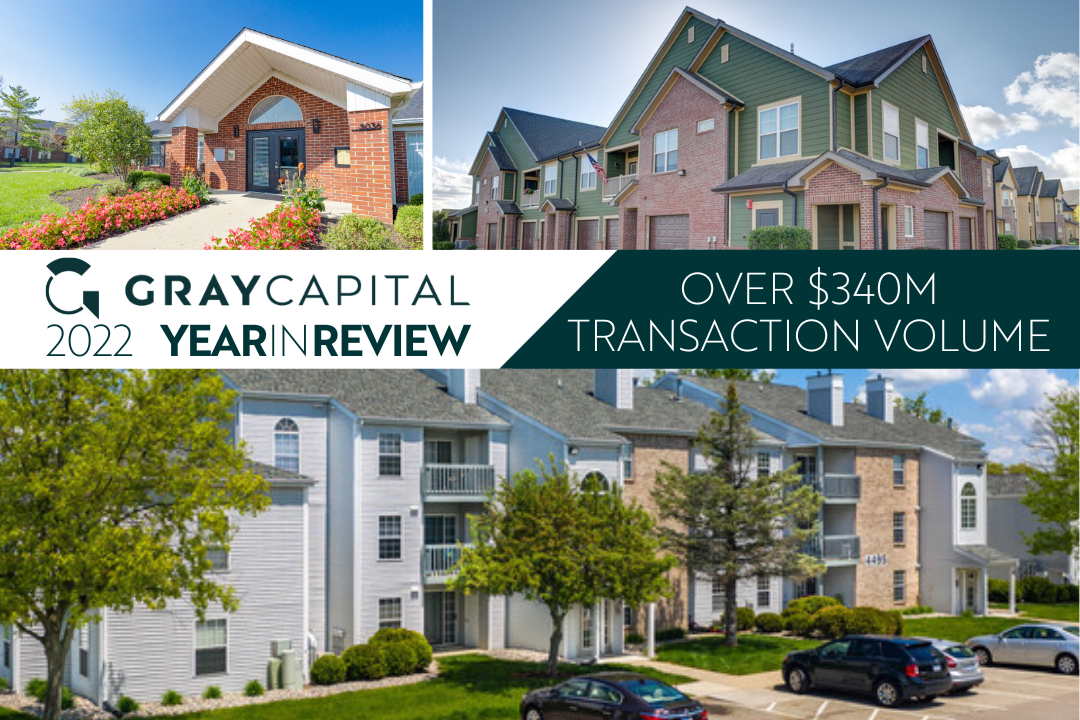
Gray Capital Completes Over $340 Million Transaction Volume in 2022 During Year of Growth
Indianapolis, IN – Gray Capital’s accomplishments throughout 2022 included the launch of its $100 million multifamily investment fund, The Gray Fund, the acquisition of several large apartment properties, recapitalization and refinancing of existing assets, notable sales that brought investments full cycle, the formation of property management company Gray Residential, and a growing team at Gray Capital, among other achievements.
Setting the tone with a rebranding effort at the start of 2022, Gray Capital kept moving forward throughout the year, with the February launch of its $100 million Gray Fund adding significant momentum.
“Our achievements in 2022 would not have been possible without the valuable contributions and help we received from everyone who worked with us this year,” said Gray Capital President Spencer Gray. “We are grateful to be able to have such amazing partners.”

Acquired in May, 2022, the 128-unit Indianapolis, IN property The Crosswinds became the first asset in the fund, followed by the June purchase of 406-unit Club Meridian in the Lansing, MI suburb of Okemos. The third property in the fund, the 250-unit Sycamore Terrace in Terre Haute, IN, was purchased in early December.
Additional Gray Capital transactions included recapitalizations for two properties, Gray Capital’s substantial refinancing of its Villas on Fir property at a 2.73% interest rate, and the September sale of Gray Capital’s Pinnacle on Meridian—the culmination of a 2.5-year project bringing a 35-39% IRR to investors. In total, Gray Capital’s transaction volume exceeded $340 million.

Gray Capital also enjoyed sizable growth in its team in 2022, with key promotions including Jay Reeder as Chief Investment Officer, Andrew Bosway as Chief Operating Officer, and Blake Pieroni as Head of Investor Relations. Gray Capital also brought on Griffin Haddad as Investment Associate and Kyle Hayward as Senior Property Accountant.
“It has been a privilege to support the expanding team at Gray Capital and Gray Residential and guide the adoption of technologies and processes that will scale with our company as it continues to grow,” said Gray Capital COO Andrew Bosway.

The aforementioned founding of Gray Capital’s property management arm, Gray Residential, (https://GrayRes.com) expanded the team even further. Hired this year as Gray Capital’s Director of Property Management, Ryan Clasey spearheaded the development of Gray Residential with essential contributions by newly-hired Regional Property Manager Katie McAtee, hiring key personnel and training staff to provide excellent service at Gray Capital properties.
Gray Capital’s accomplishments in 2022 provide significant momentum for 2023, with the acquisition of 148-unit, Bloomington, IN Echo Park Apartments slated for Q1, the continued expansion of Gray Residential into all Gray Capital properties, and plans to close out The Gray Fund (https://gray.fund) with all capital raised and deployed.
NOTE: This is not an offer to invest. Opportunities described are available for accredited investors only.